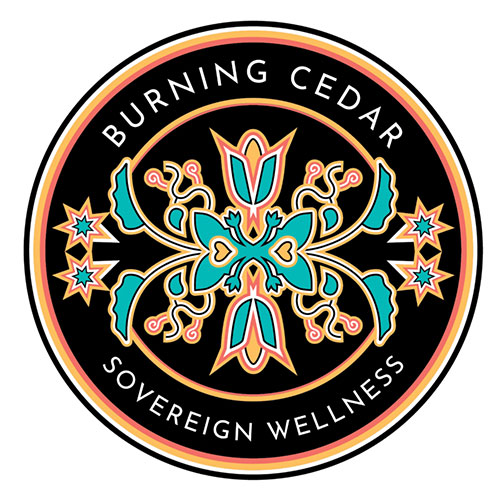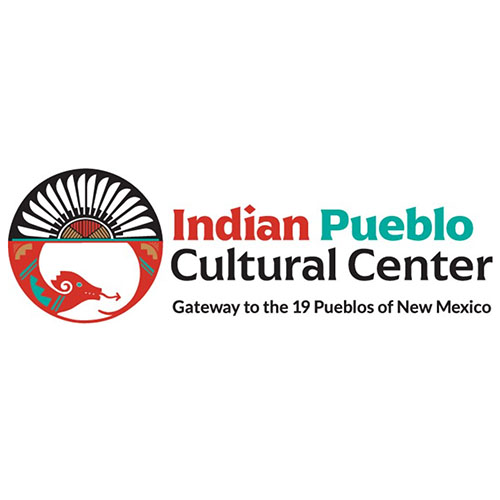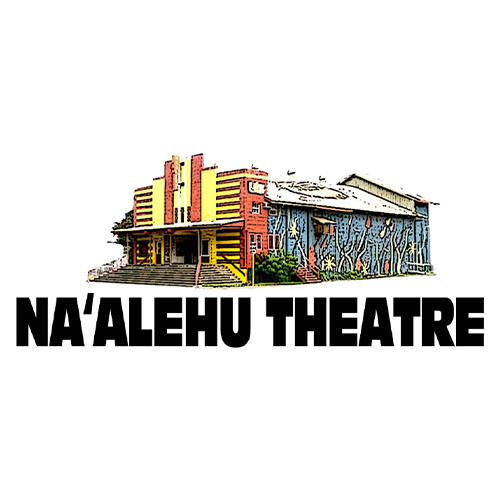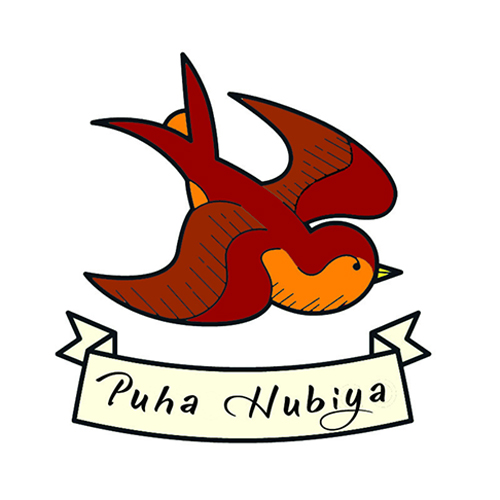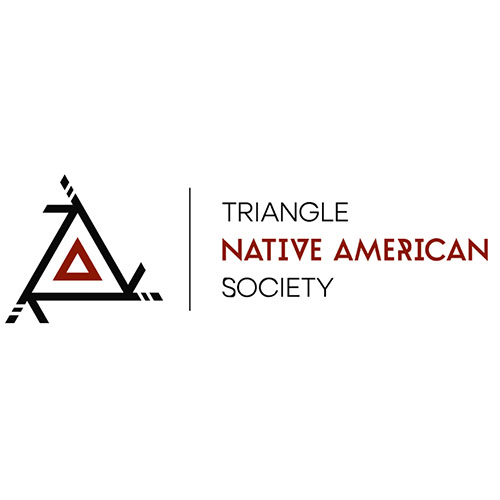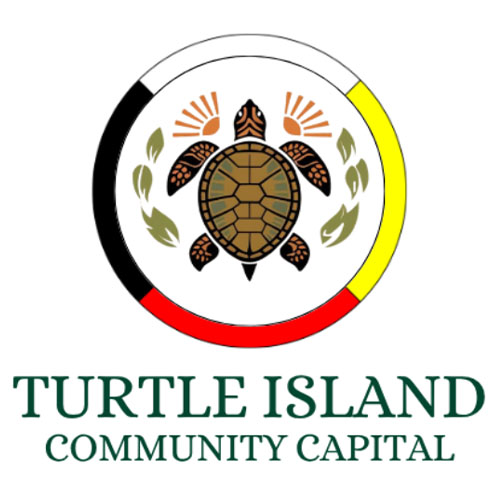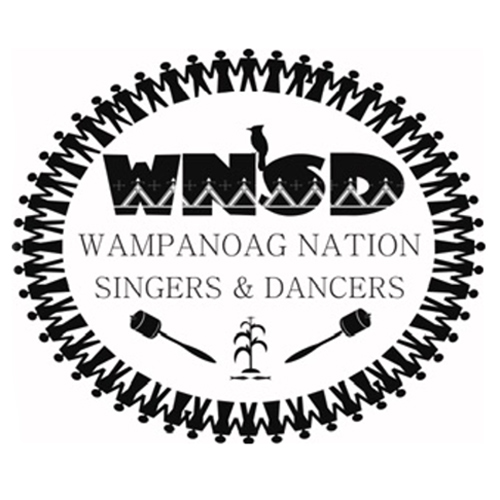About NAEB
The Native Arts Ecology Building is a powerful tool that enables us to extend our impact beyond individual artists by supporting Native nonprofit organizations, artist collectives, and Native Community Development Financial Institutions (NCDFIs) in their efforts to uplift Native artists within their communities. Our cohort-based grant programs provide nonprofits with resources to identify opportunities for Native artists to thrive and to highlight their value to the broader Native community.
In 2018, we published a report detailing the results of our work with Native Arts Ecology Building Grant grantees, Investing in the Indigenous Arts Ecology. This report builds on the findings from our 2013 market study, "Establishing a Creative Economy: Native Arts as an Economic Engine."
What is the Indigenous Arts Ecology?
First Peoples Fund defines Indigenous Arts Ecology as a relationship-based, collective system of arts ecosystems, grounded in ancestral knowledge and inclusive of environments, spirit, people and lifeways.
Indigenous Arts Ecosystems comprise the local or regional communities of individuals, formal and informal networks, resources, cultural infrastructure, organizations, and businesses that interact as a system to provide support to Indigenous artists and culture bearers. These ecosystems are led by artists and culture bearers whose art and lives embody the values, traditions and aspirations of their communities.
These concepts inform our Native Arts Ecology Building Grants, encouraging organizations to reach beyond how artists drive creative economies and emphasizing their value to the broader fabric of Indigenous communities, environments and traditions.
Nominees for the Community Spirit Award must meet the following criteria:
- An enrolled member of, or provide proof of lineal descendancy from, a U.S. federally or U.S. state recognized tribe, or be able to provide proof of ancestry as an Alaska Native or Native Hawaiian.
- A U.S. resident.
- Work with art mediums that are rooted in the traditions of their Native culture(s).
- Active within a Native community and/or lives within a tribal community.
- Actively involved in sharing their artistic and/or cultural knowledge with community members.
- Nominees must be practicing Native artists or culture bearers who have demonstrated maturity in their field, and have been engaged in their medium for at least 10 years.
- Self-nominations are not accepted.
1. Identify
Identify an artist who you feel exemplifies the spirit of this award — and contact the artist to confirm their interest in the award.
2. Nominate
Using the nomination form, linked above when the nomination window is open, briefly write the contributions the artist has made to his or her community. The nominator is encouraged to work collaboratively with their nominee to complete all nomination and application materials. Before nominating a culture bearer, we strongly encourage the nominator to contact the nominee in advance to fully discuss the guidelines and process of the Jennifer Easton Community Spirit Awards.
3. Apply
After nominations close, application forms are sent to both the artist/nominee and nominator if the nomination has been selected to move forward in the application process. Subscribe to our mailing list to learn more.
For more information on the 2026 Jennifer Easton Community Spirit Award guidelines click here.
Who can submit a nomination?
Anyone can nominate a Native artist for the Jennifer Easton Community Spirit Awards. Nominators tend to be students, mentees, colleagues, and tribal elders who have recognized these exceptional artists for knowing themselves, honoring others, and sustaining spirit in their own communities.
Can the nominator help the CSA applicant?
The nominator is encouraged to work collaboratively with their nominee to complete all application materials.
Can I nominate mysel for a CSA?
No, self-nominations are not accepted for the Community Spirit Award.
contact
Fox Spears, Program Manager of Fellowships, fox@firstpeoplesfund.org
Rooted Pathways Grant
Rooted Pathways is a program that aims to provide resources and stability to an ecosystem of Native arts and cultural organizations through unrestricted general operating support, empowering organizations to define and advance their own organizational well-being. If selected, organizations will be required to submit an Interim and Final report. Learning Cohort participation is also a feature of this funding program.
The program is designed to help organizations deepen their alignment with their mission and vision—strengthening their roots, fostering growth, and supporting their journey toward becoming thriving, resilient organizations.
This funding program is a part of the Wallace Foundation’s two-three year $36 Million Dollar Advancing Well-Being in the Arts Program.
PLEASE NOTE
- 9 Native-led arts organizations, businesses, and/or artist collectives awarded
Key Information
Grant amount: $55,000
Applications window: June 2, 2025 - June 20, 2025
Grant Period: August 1, 2025-July 31, 2025
WHO CAN APPLY?
- Native-led arts organizations/ businesses/collectives (Non-profit, For Profit, LLCs, etc.) with budgets under $500,000
- Serves US-based artists and culture bearers who are members of a U.S. federally-recognized or U.S. state-recognized tribe, Alaska Native or Native Hawaiian
- Applicants may not have received Wallace Foundation awards from other participating organizations of Advancing Well-Being in the Arts Initiative. While applying to multiple participating organizations is permitted, recipients may only be awarded one grant through this joint funding initiative
- Organizations/business/collectives must have existed for a minimum of two years, though formal legal status of the organization may have developed/changed during this time. Two years of activities must be demonstrated
- Lead applicants of a collective must be at least 18 years of age at the time of application
- Must reside and be based within the 50 U.S. States, the District of Columbia, and/or U.S. territories and other U.S. jurisdictions
- Leadership of the organization must include an enrolled member of, or provide proof of lineal descendancy from, a U.S. federally-recognized or U.S. state-recognized tribe, or be able to provide proof of ancestry as an Alaska Native or Native Hawaiian. For more information about acceptable documents, please click here
- Program staff will conduct a technical review of applications for program requirements and eligibility
- The final number of grants awarded is determined based on total available funding
- Final award decisions are based on review committee recommendations and any relevant funding restrictions
QUESTIONS?
Bridget Skenadore, Indigenous Arts Ecology Program Manager, via email at bridget@firstpeoplesfund.org
Native Arts Ecology Building Grant
The Native Arts Ecology Building Grant is a cohort-based, by invitation-only grant program designed to support Native-led nonprofit organizations and Native Community Development Financial Institutions (NCDFIs) that are working to strengthen their infrastructure to support Native artists. Through this grant program, First Peoples Fund expands its impact by equipping organizations with funding and technical assistance to foster thriving, culturally grounded creative ecosystems in their communities.
questions?
If you have questions about the Native Arts Ecology Building Program, please contact, bridget@firstpeoplesfund.org
Weaving Kinship Grant
Native Arts and culture are the heartbeats to a thriving, healthy community, and have the power to transform communities by reviving cultural practices, building kinship, and connecting people to their language and culture. The Weaving Kinship Grant program aims to enhance the Indigenous Arts Ecology (IAE) and support organizations that First Peoples Fund has not previously partnered with, thereby weaving new relationships and strengthening kinship.
In addition to funding, the Weaving Kinship grant program will collaborate with grantee partners to identify non-financial support that will strengthen their programs and promote long-term sustainability.
Key Information
Total Awardees: 10
Grant amount: $75,000 (Program Support)
Applications window: June 2 - June 18, 2025 at 6pm MST
Grant Period: September 1, 2025 - August 31, 2026
WHO CAN APPLY?
- Native-led Native Community Development Financial Institutions (CDFIs), community development, arts, cultural arts, or language revitalization organizations)
- Lead applicants of a collective must be at least 18 years of age at the time of application
- Applicants must reside and be based within the U.S.
- Applicants residing outside the U.S. are ineligible to apply.
- Applicants must be an enrolled member of, or provide proof of lineal descent from, a U.S. federally-recognized or U.S. state-recognized tribe, or be able to provide proof of ancestry as an Alaska Native or Native Hawaiian.
- For more information about acceptable documents, please click here
- Applicants may not be enrolled in any academic, degree-conferring program
- Previous and current Native Arts Ecology Building (NAEB) grantees are not eligible. This program is designed for organizations not yet supported by First Peoples Fund
WHAT'S ELIGIBLE?
- Have a demonstrated history of providing art-related services and programs
- Demonstrate that the project will have a positive impact on the careers of Native artists or the local community
- Learning Journey: If selected, grantees will have the option to participate in an in-person co-visioning session in the early stages of the grant. The First Peoples Fund Program Manager and Site Advisor may visit to learn about additional support that can be offered to ensure the organization's success in achieving its goals and outcomes.
- Stage 1: Open call for Letters of Interest (LOI) from organizations that meet eligibility requirements. Following the submission of LOIs, FPF will internally review and advance those that best fit the purpose of the Weaving Kinship Grant. Applicants will be notified if they advance to submit a full application in July 2025.
- Stage 2: If selected in Stage 1, an invitation to complete a full application will be sent to the applicant. Based on the averaged application rating, the review committee convenes to deliberate. Final decisions are made based on panelist recommendations, available funding, and any relevant funding restrictions.
QUESTIONS?
If you have any questions about the Native Arts Ecology Building Program, feel free to contact: bridget@firstpeoplesfund.org
Rooted Pathways
Rooted Pathways is a program that aims to provide resources and stability to an ecosystem of Native arts and cultural organizations through unrestricted general operating support, empowering organizations to define and advance their organizational well-being. If selected, organizations will be required to submit an Interim and Final report. Participation in the Learning Cohort is also a feature of this funding program.The program is designed to help organizations deepen their alignment with their mission and vision, strengthening their roots, fostering growth, and supporting their journey toward becoming thriving, resilient organizations.
This funding program is a part of the Wallace Foundation’s two- to three-year $36 Million Dollar Advancing Well-Being in the Arts Program.
KEY INFORMATION
Total Grant Awards: 9
Grant amount: $55,000 (General Operating)
Applications window: June 2 - June 20, 2025 at 6pm MST
Grant Period: August 1, 2025 - July 31, 2026
WHO CAN APPLY?
- Native-led arts organizations/ businesses/collectives (Non-profit, For Profit, LLCs, etc.) with budgets under $500,000
- Serves US-based artists and culture bearers who are members of a U.S. federally-recognized or U.S. state-recognized tribe, Alaska Native or Native Hawaiian
- Applicants may not have received Wallace Foundation awards from other participating organizations of Advancing Well-Being in the Arts Initiative. While applying to multiple participating organizations is permitted, recipients may only be awarded one grant through this joint funding initiative
- Organizations/businesses/collectives must have existed for a minimum of two years, though the formal legal status of the organization may have developed/changed during this time. Two years of activities must be demonstrated
- Applicants for a collective must be at least 18 years of age at the time of application
- Must reside and be based within the 50 U.S. States, the District of Columbia, and/or U.S. territories and other U.S. jurisdictions
- Leadership of the organization must include an enrolled member of, or provide proof of lineal descent from, a U.S. federally-recognized or U.S. state-recognized tribe, or be able to provide proof of ancestry as an Alaska Native, Native Hawaiian or First Nations (must be a U.S. Citizen)
- Current grantees are not eligible to apply for this program
- Applicants may not be enrolled in any academic, degree-conferring program
- If you are a previous grantee with First Peoples Fund (FPF), you must have submitted a final report for any previously awarded FPF Grants
- Program staff will conduct a technical review of applications for program requirements and eligibility
- The final number of grants awarded is determined based on the total available funding
- Final award decisions are based on review committee recommendations and any relevant funding restrictions
QUESTIONS?
If you have questions about the Native Arts Ecology Building Grant Programs, please contact bridget@firstpeoplesfund.org


